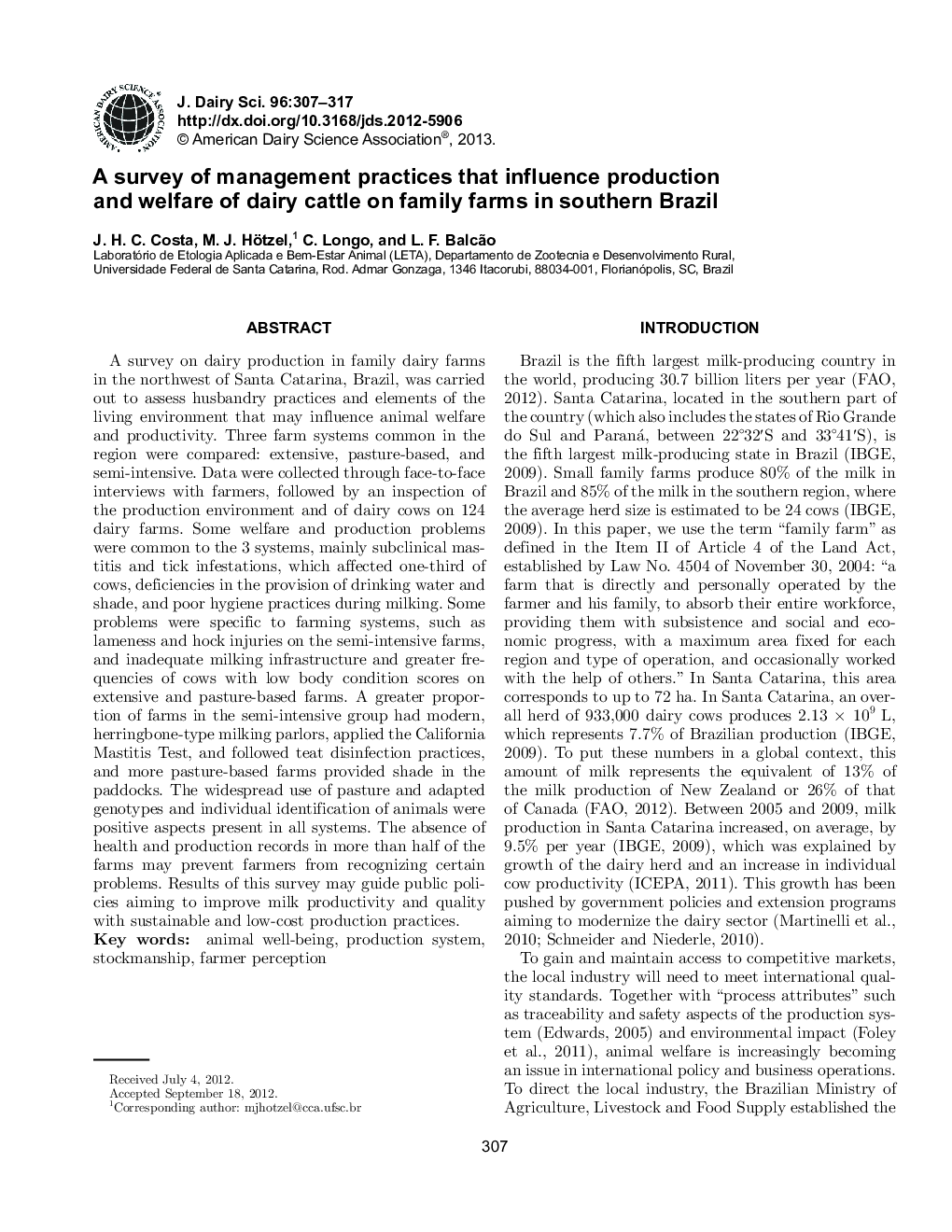| Article ID | Journal | Published Year | Pages | File Type |
|---|---|---|---|---|
| 10980550 | Journal of Dairy Science | 2013 | 11 Pages |
Abstract
A survey on dairy production in family dairy farms in the northwest of Santa Catarina, Brazil, was carried out to assess husbandry practices and elements of the living environment that may influence animal welfare and productivity. Three farm systems common in the region were compared: extensive, pasture-based, and semi-intensive. Data were collected through face-to-face interviews with farmers, followed by an inspection of the production environment and of dairy cows on 124 dairy farms. Some welfare and production problems were common to the 3 systems, mainly subclinical mastitis and tick infestations, which affected one-third of cows, deficiencies in the provision of drinking water and shade, and poor hygiene practices during milking. Some problems were specific to farming systems, such as lameness and hock injuries on the semi-intensive farms, and inadequate milking infrastructure and greater frequencies of cows with low body condition scores on extensive and pasture-based farms. A greater proportion of farms in the semi-intensive group had modern, herringbone-type milking parlors, applied the California Mastitis Test, and followed teat disinfection practices, and more pasture-based farms provided shade in the paddocks. The widespread use of pasture and adapted genotypes and individual identification of animals were positive aspects present in all systems. The absence of health and production records in more than half of the farms may prevent farmers from recognizing certain problems. Results of this survey may guide public policies aiming to improve milk productivity and quality with sustainable and low-cost production practices.
Related Topics
Life Sciences
Agricultural and Biological Sciences
Animal Science and Zoology
Authors
J.H.C. Costa, M.J. Hötzel, C. Longo, L.F. Balcão,
